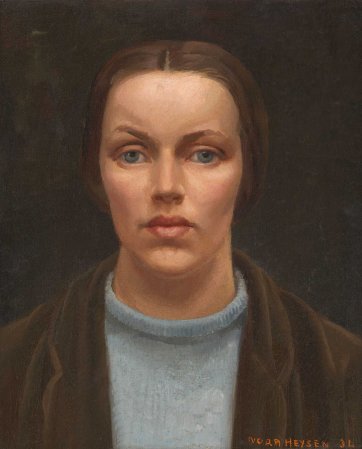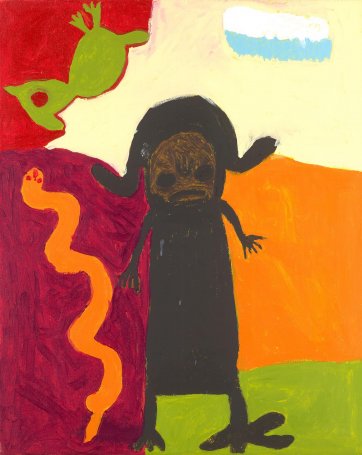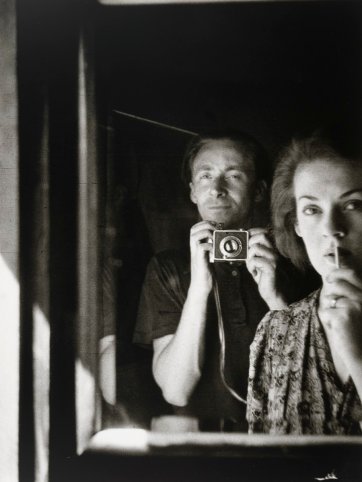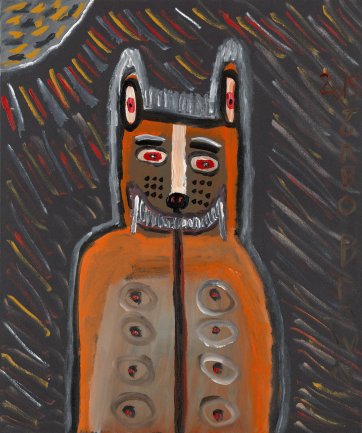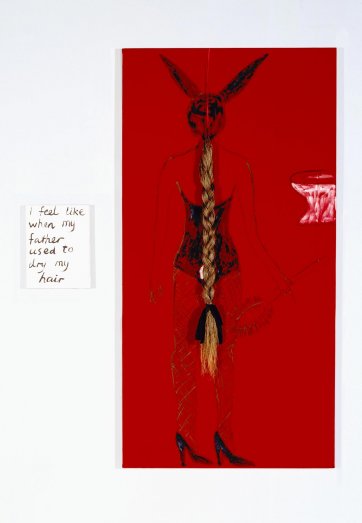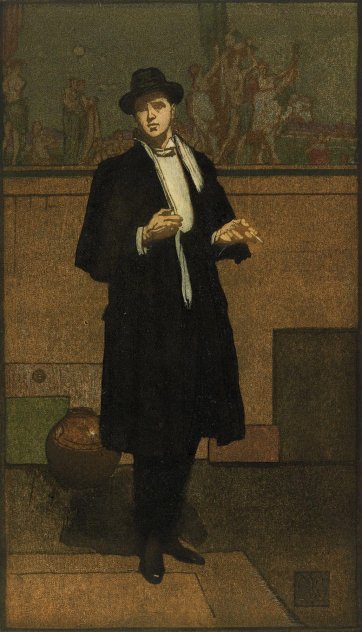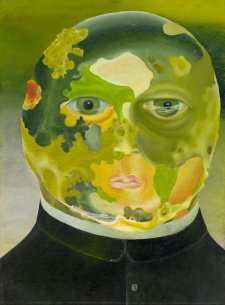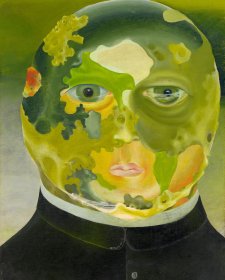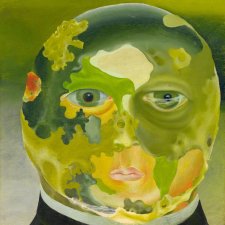In its uniting of artist and sitter, the self-portrait is an intriguing facet of portraiture. The self-reflection is a format that appears to grant the viewer the assurance of revelation and intimate access to the artist’s psyche. However, what the artist intends to communicate to their audience through self-portraiture is highly varied, and the message each artist conveysis as individual as the artist themselves. Additionally, there is room for the viewer to question how the artist has chosen to depict their image.
1 Self portrait, 2002 Peggy Napangardi Jones. National Gallery of Victoria. Purchased with funds donated by Supporters and Patrons of Aboriginal Art, 2003. 2 Self portrait, 1955 John Brack. National Gallery of Victoria. Purchased with the assistance of the National Gallery Women's Association, 2000.
Self-portraiture is a diverse genre: there are myriad ways an artist can present themselves. A typical way for the artist to portray themselves is in the role of ‘the artist’, including in the work a visual clue to their profession – for instance holding a brush or paint palette – or showing themselves at work in the studio.
1 In the mirror: self portrait with Joy Hester, 1939 Albert Tucker. 2 Self portrait, 'I am the Dingo Spirit', 2015 Trevor Turbo Brown. National Gallery of Victoria. Gift of Vince Sinni in memory of Trevor Turbo Brown through the Australian Government's Cultural Gifts Program, 2018.
As part of an investigation of self, these representations can also communicate the complexities of status and gender. This selection of works explores what the artists intend to reveal or exclude about themselves through their self-representations, considering the environment in which the artists are placed, and the props and imagery they choose to include in their works.
1 A woman's work is never done + I feel like when my father used to dry my hair, 1992 Jenny Watson. National Gallery of Victoria. Purchased, 1999. 2 Self Portrait #2, 1947/2007 William Yang, an unknown artist. © William Yang. 3 The man in black, 1925 Napier Waller CMG OBE. National Gallery of Victoria. Gift of Mr Eric Thake, 1967.
